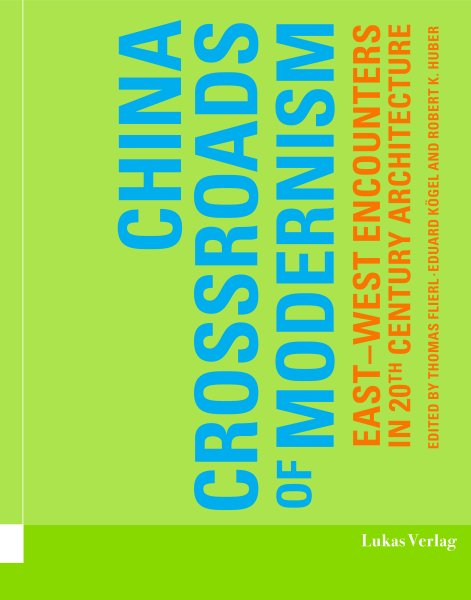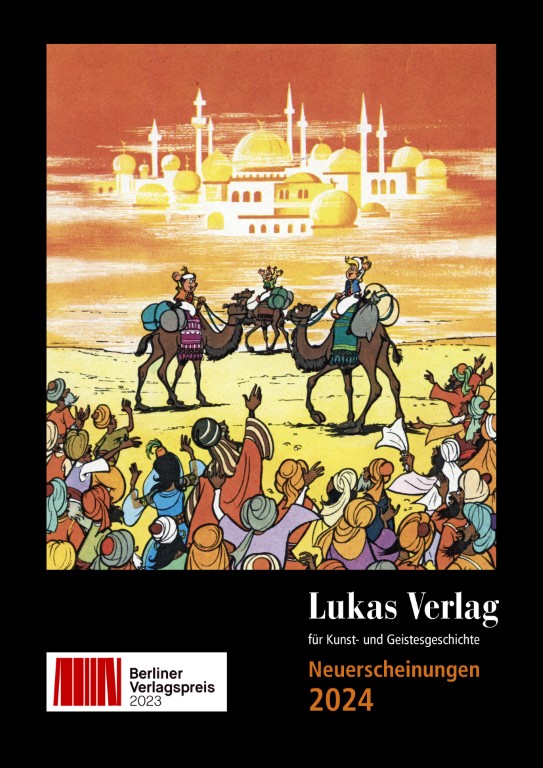Thomas Flierl (Hg.), Robert K. Huber (Hg.), Eduard Kögel (Hg.)
China – Crossroads of Modernism
East-West Encounters in 20th Century Architecture
Gegenstand und Raum, Neue Folge [5]
mit zahlr. Abb.. Klappenbroschur, 160 Seiten, 100 Abb., 220 x 280 mm, teils farbige Abbildungen, englisch
1. Auflage, ersch. 15 August 2024
noch nicht erschienen
ISBN 978-3-86732-471-7
Modernism did not only take place in Europe, but also in multiple variations in East Asia. For example, Chinese students in the West came into contact with the themes and transformed them after returning home. This book brings together selected perspectives from China and (mainly) Germany that discuss the mutual influence.
As an introduction, Eduard Kögel presents a panorama of architectural development in China from the 1920s to the 1970s. For the first time ever, Chunyan Zhang addresses how the ideas of the Bauhaus entered the Chinese discourse in the 1940s and how important the Bauhaus books were in this context. Li Hou takes up Richard Paulick’s period of emigration to Shanghai (1933–1949) and discusses his enormous influence on urban planning. Wen-chi Wang explains the intercultural practice of Chen-kuan Lee, who founded the Chinese Werkbund in Berlin in 1941 together with Hugo Häring and Hans Scharoun, whose ideas also influenced the protagonists in West Germany in the 1950s. Wolfgang Thöner traces how Bauhausler Marianne Brandt found her love for Chinese culture as artistic director of the exhibition «German Applied Art from the GDR» (Beijing and Shanghai, 1953/54). A real discovery in this context was the «German-German Architecture Trip to China in 1957», an all-German interlude in the thaw period, the minutes of which were discovered by Eduard Kögel. In his contribution, Jiang Feng shows how Hsia Changshi, who trained in Karlsruhe and Tübingen, developed architecture in Guangzhou in the 1950s that was orientated towards the subtropical climate and was clearly influenced by the ideas of Le Corbusier. Angelika Schnell traces the 14-day journey (1973) of the Austrian Roland Rainer to Shanghai, Suzhou, Nanjing, Beijing and Guangzhou, where he hoped to find the essence of Chinese culture, which, among other things, served as a model for his courtyard house settlements.
The contributions collected in this volume vividly demonstrate the cross-fertilisation in China and Europe beyond bold copy-cat architecture, which has not yet been presented in this way, and which make it clear that cultural discourse is essential for new developments.

Thomas Flierl
Dr. phil. Thomas Flierl, geb. 1957, Studium der Philosophie und Ästhetik an der Humboldt-Universität zu Berlin, Promotion 1985, Tätigkeiten in Kulturverwaltung und Politik (u.a. Leiter des Kulturamtes Berlin-Prenzlauer Berg 1990–1996, Baustadtrat in Berlin-Mitte 1998/99, Senator für Wissenschaft, Forschung und Kultur 2002–2006), seit 2006 freiberuflich tätig als Bauhistoriker und Publizist mit den Forschungsschwerpunkten Bauhaus, deutsch-sowjetische Architekturbeziehungen, Nachkriegsmoderne (u.a.: Standardstädte. Ernst May in der Sowjetunion 1930–1933, Berlin 2012; Hannes Meyer und das Bauhaus. Im Streit der Deutungen, hg. mit Philipp Oswalt, Leipzig 2018). Seit 2007 Vorsitzender der Hermann-Henselmann-Stiftung. Mitglied des Bauhaus-Instituts für Geschichte und Theorie der Architektur und Planung an der Bauhaus-Universität Weimar.
Weitere Titel der Reihe
Angegebene Preise & Veröffentlichungsdatum unter Vorbehalt



